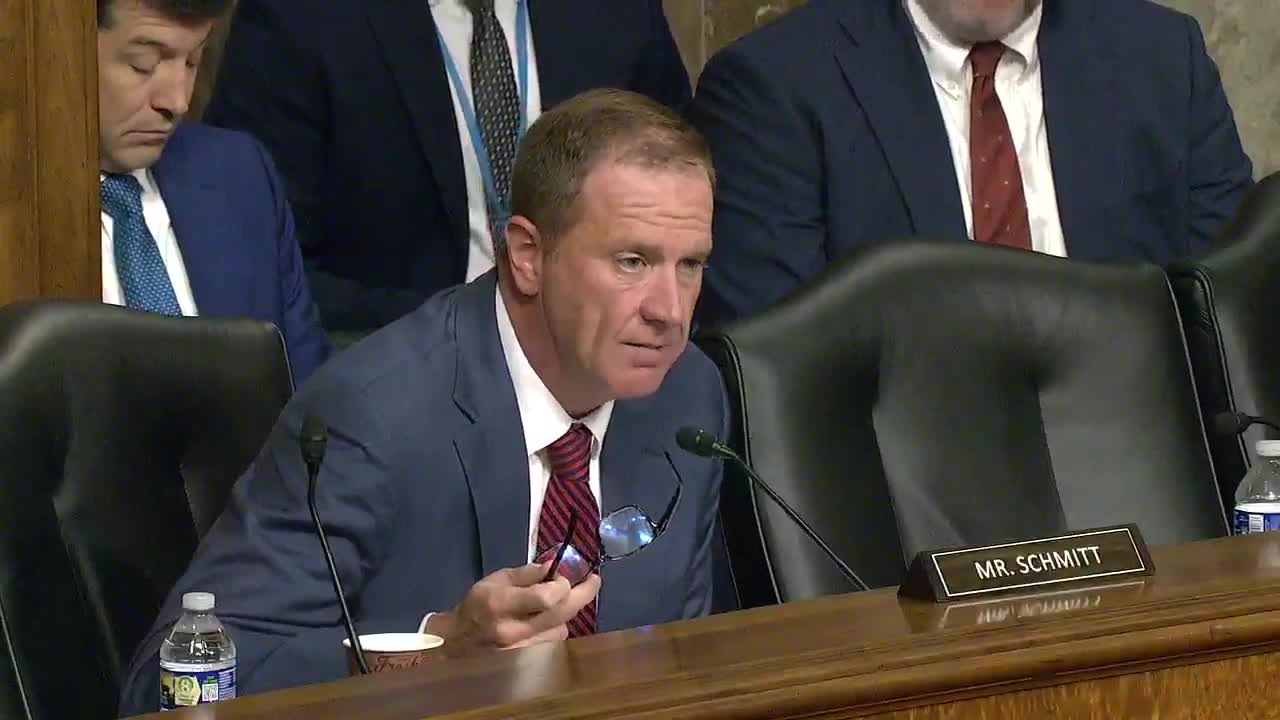Senate committee addresses Army modernization and drone funding challenges
June 05, 2025 | Armed Services: Senate Committee, Standing Committees - House & Senate, Congressional Hearings Compilation
This article was created by AI summarizing key points discussed. AI makes mistakes, so for full details and context, please refer to the video of the full meeting. Please report any errors so we can fix them. Report an error »

In a pivotal meeting held by the U.S. Senate Committee on Armed Services, key discussions unfolded regarding the Department of the Army's posture in relation to the Defense Authorization Request for Fiscal Year 2026 and the Future Years Defense Program. The atmosphere was charged with urgency as senators sought clarity on the Army's readiness and modernization efforts amidst evolving threats.
One of the focal points was the Army's use of autonomous systems, particularly drones, in border security operations. Senators expressed concerns about the effectiveness of these technologies and the need for improved detection and response capabilities. A senator highlighted the importance of not only the drones themselves but also the comprehensive systems that support their deployment. The Army's leadership acknowledged the challenges and emphasized ongoing efforts to enhance these capabilities, including collaboration with private sector innovators.
Funding for drone technology was also a significant topic, with a reconciliation bill proposing $1 billion for small drones and another billion for one-way attack drones. This funding aims to bolster the Army's technological edge, although some of it may not directly benefit the Army.
The meeting also addressed broader issues, such as the Army's budget priorities. Senator Duckworth criticized the allocation of $30 million for a parade, suggesting that funds could be better spent on supporting military families. She raised concerns about the military's involvement in domestic law enforcement, urging a focus on warfighting rather than legal compliance.
Another critical discussion centered on the Army's plans to consolidate operations at the Rock Island Arsenal, which could lead to workforce reductions. Senators expressed apprehension about the potential impact on production capabilities and the workforce, emphasizing the need for transparency and assurance that essential functions would not be compromised.
The Army's strategy for ground mobility was scrutinized as well, particularly regarding the transition from Humvees to newer vehicles. Senators questioned the adequacy of current models for medical evacuation needs, stressing the importance of maintaining robust ground capabilities during this transition.
As the meeting concluded, the Army's leadership reiterated their commitment to modernization and efficiency, while senators underscored the necessity of balancing innovation with the readiness and welfare of military personnel. The discussions highlighted the ongoing challenges and complexities facing the Army as it navigates a rapidly changing defense landscape, leaving many questions about the future of military readiness and resource allocation still to be answered.
One of the focal points was the Army's use of autonomous systems, particularly drones, in border security operations. Senators expressed concerns about the effectiveness of these technologies and the need for improved detection and response capabilities. A senator highlighted the importance of not only the drones themselves but also the comprehensive systems that support their deployment. The Army's leadership acknowledged the challenges and emphasized ongoing efforts to enhance these capabilities, including collaboration with private sector innovators.
Funding for drone technology was also a significant topic, with a reconciliation bill proposing $1 billion for small drones and another billion for one-way attack drones. This funding aims to bolster the Army's technological edge, although some of it may not directly benefit the Army.
The meeting also addressed broader issues, such as the Army's budget priorities. Senator Duckworth criticized the allocation of $30 million for a parade, suggesting that funds could be better spent on supporting military families. She raised concerns about the military's involvement in domestic law enforcement, urging a focus on warfighting rather than legal compliance.
Another critical discussion centered on the Army's plans to consolidate operations at the Rock Island Arsenal, which could lead to workforce reductions. Senators expressed apprehension about the potential impact on production capabilities and the workforce, emphasizing the need for transparency and assurance that essential functions would not be compromised.
The Army's strategy for ground mobility was scrutinized as well, particularly regarding the transition from Humvees to newer vehicles. Senators questioned the adequacy of current models for medical evacuation needs, stressing the importance of maintaining robust ground capabilities during this transition.
As the meeting concluded, the Army's leadership reiterated their commitment to modernization and efficiency, while senators underscored the necessity of balancing innovation with the readiness and welfare of military personnel. The discussions highlighted the ongoing challenges and complexities facing the Army as it navigates a rapidly changing defense landscape, leaving many questions about the future of military readiness and resource allocation still to be answered.
View full meeting
This article is based on a recent meeting—watch the full video and explore the complete transcript for deeper insights into the discussion.
View full meeting